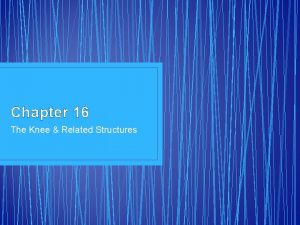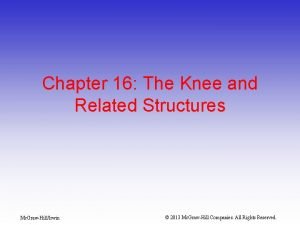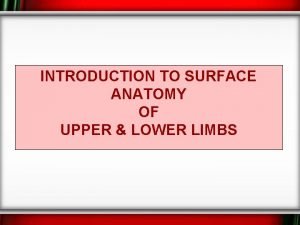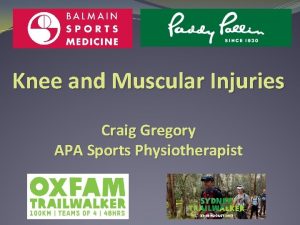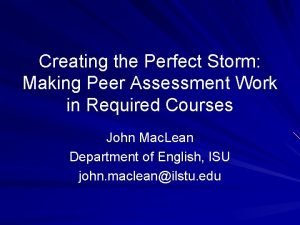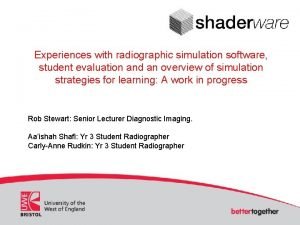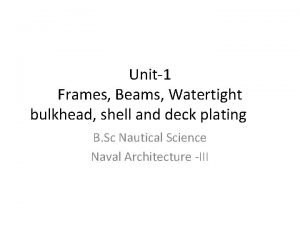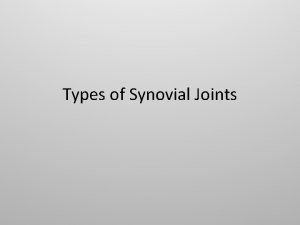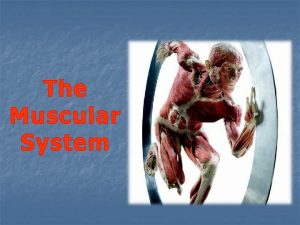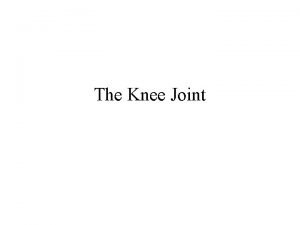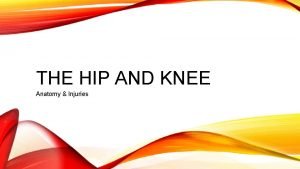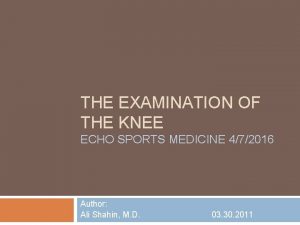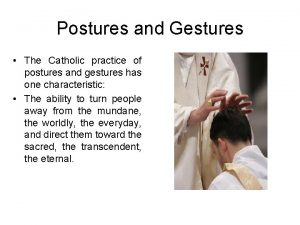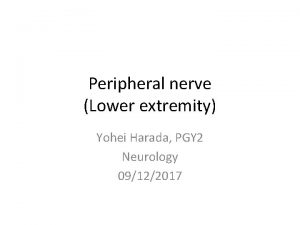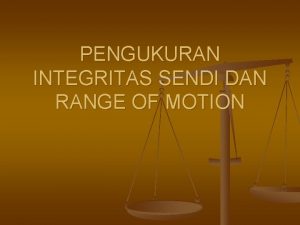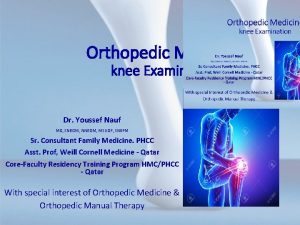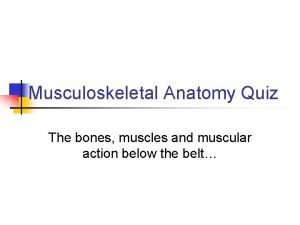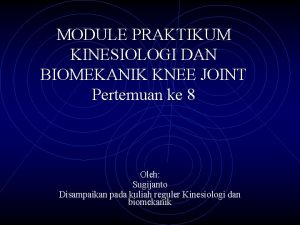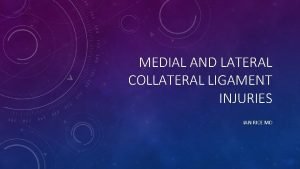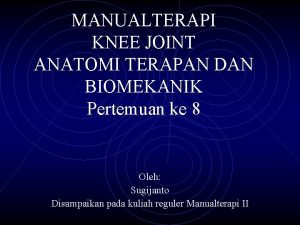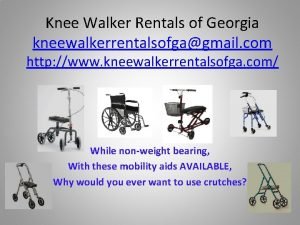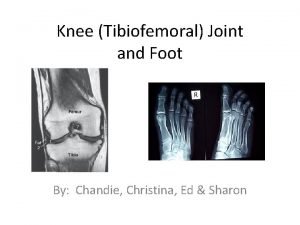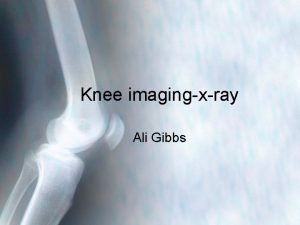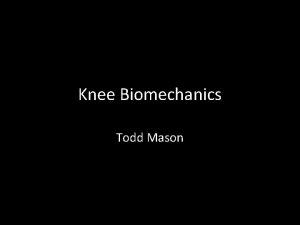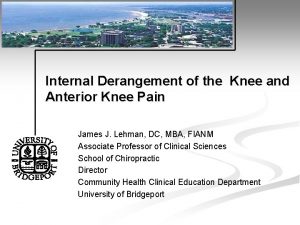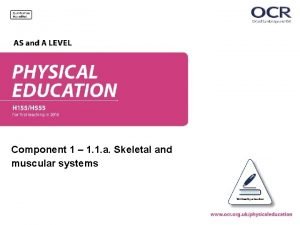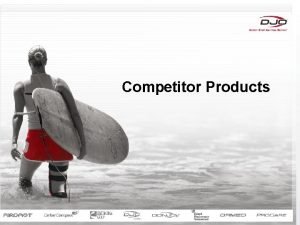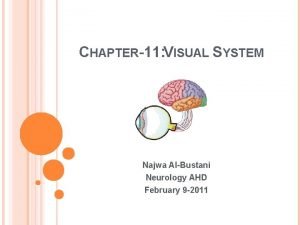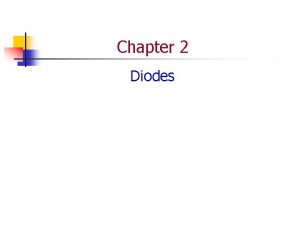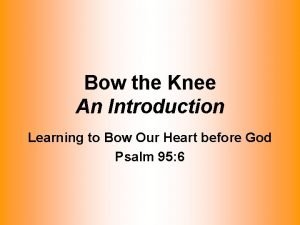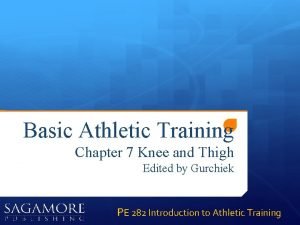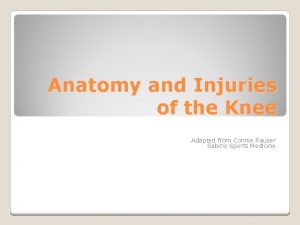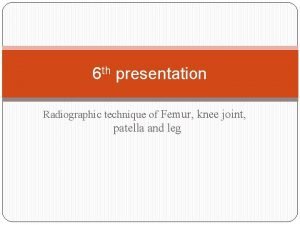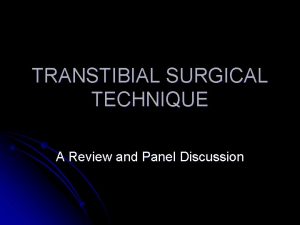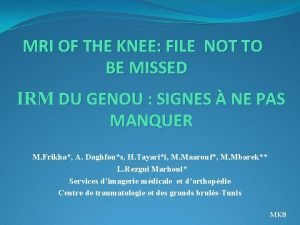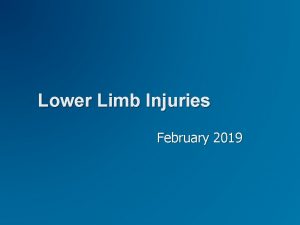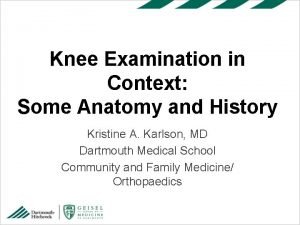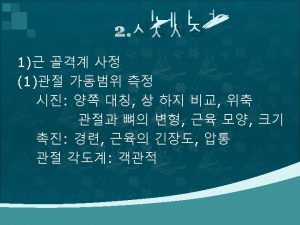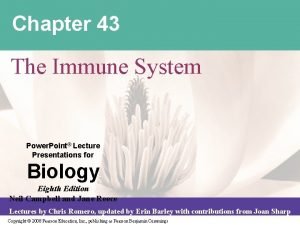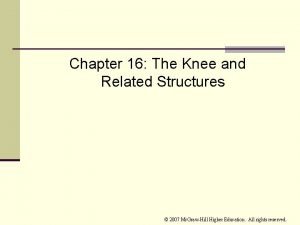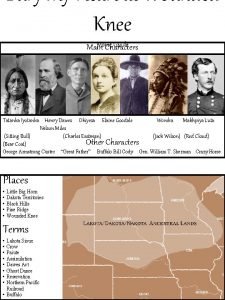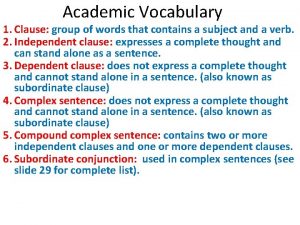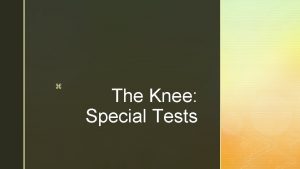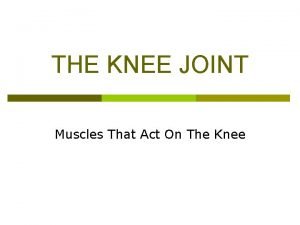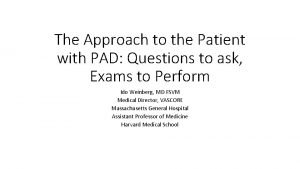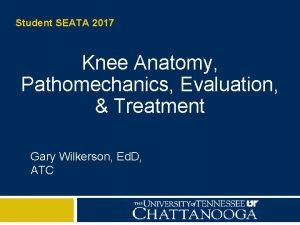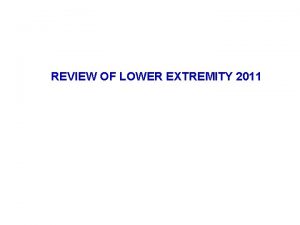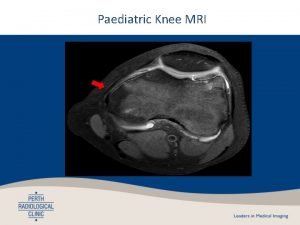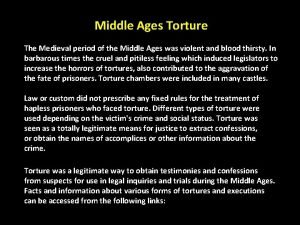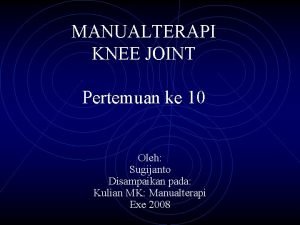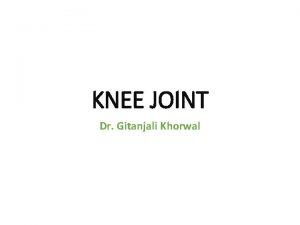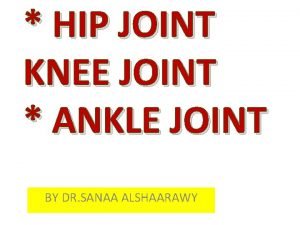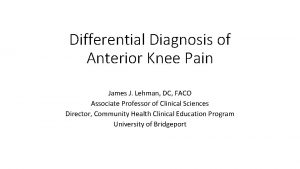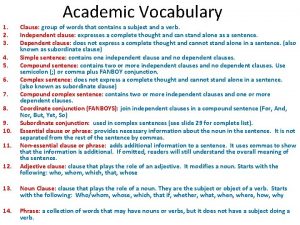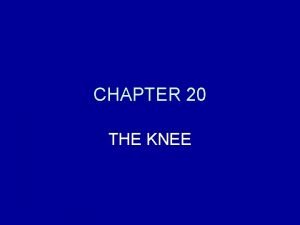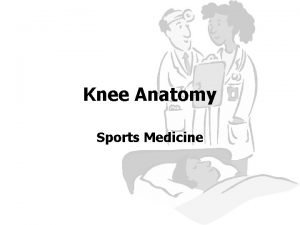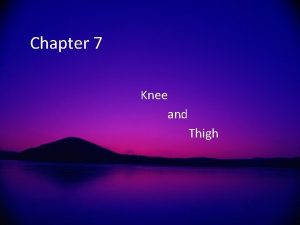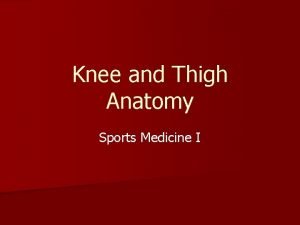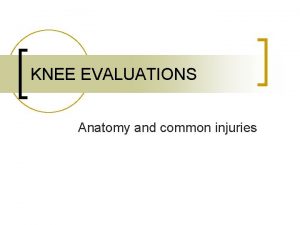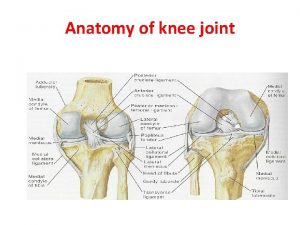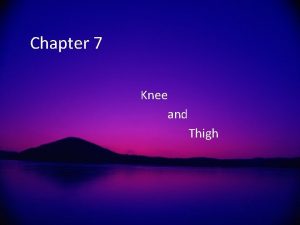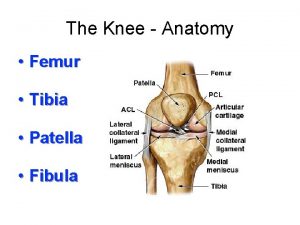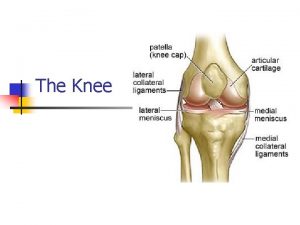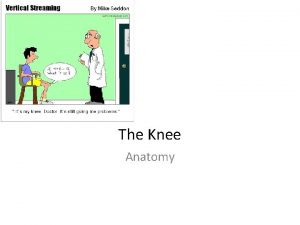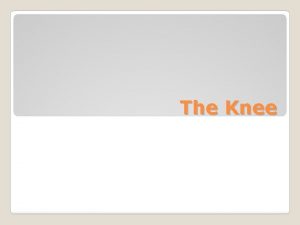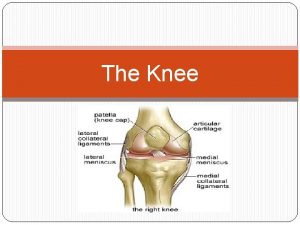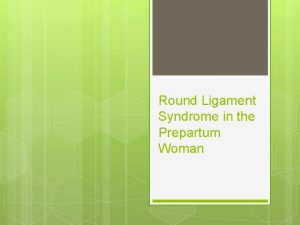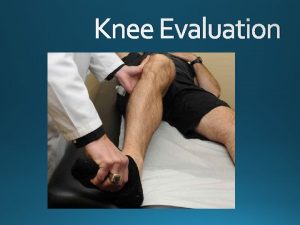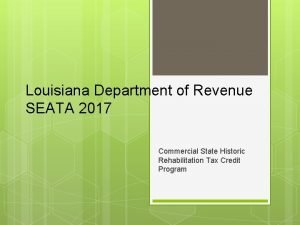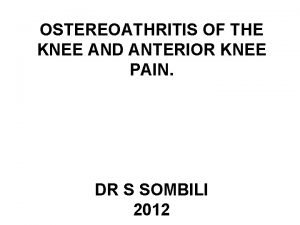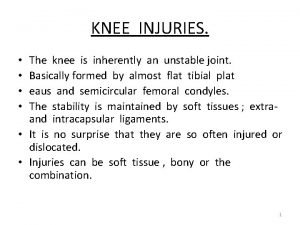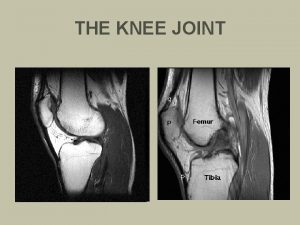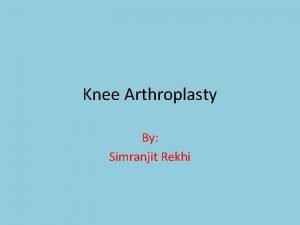Student SEATA 2017 Knee Anatomy Pathomechanics Evaluation Treatment














































































- Slides: 78

Student SEATA 2017 Knee Anatomy, Pathomechanics, Evaluation, & Treatment Gary Wilkerson, Ed. D, ATC

Knee Anatomy – Anterior View 2 Medial Collateral Lig. (16) Lateral Collateral Lig. (6) Anterior Cruciate Lig. (1) Posterior Cruciate Lig. (14) Medial Mensicus (12) Lateral Meniscus (9) Coronary Ligaments (11) Ant. Meniscofemoral Lig. (2) (Ligament of Humphry)

Knee Anatomy - Posterior View 3 Medial Collateral Lig. (16) Lateral Collateral Lig. (6) Anterior Cruciate Lig. (1) Posterior Cruciate Lig. (14) Medial Mensicus (12) Lateral Meniscus (9) Post. Meniscofemoral Lig. (15) (Ligament of Wrisberg)

Menisco-Femoral Ligaments 4 a. MFL = Ligament of Humphry p. MFL = Ligament of Wrisberg

Knee Anatomy 5 • Postero-Medial • • Postero-Lateral Posterior Oblique Lig. • Arcuate Lig. & Oblique Popliteal Ligament Posterior Oblique Ligament Arcuate Ligament

Clinical Evaluation of the Knee 6 History • Inspection • Active & Passive Neurovascular Status • Location of Point Tenderness ROM • • Hemarthrosis vs. “Watery” Effusion Palpation • Mechanism of Injury Circulation & Sensation Special Tests • Ligament & Meniscus Pathology

History 7 Mechanism of Injury • Uniplanar Blow/Displacement • Isolated injury • Multiplanar and/or Rotational Displacement • Multiple injuries Associated Sounds/Sensations • “Pop” or “Snap”

Lower Extremity Alignment 8

Acute Injuries 9 Muscle Strain • • • Contusions • • • Gastrocnemius Plantaris Popliteus Quadriceps Femoral condyle Infrapatellar fat pad Traumatic Bursitis • • Prepatellar Suprapatellar Pes Anserine Infrapatellar

Medial Collateral Ligament Tear 10

Epiphyseal Fracture 11 Difficult to distinguish from collateral ligament injury!

“Unhappy Triad” 12 ACL + MCL + Lateral Meniscus Tear ?

ACL Tear 13 Female athletes experience 4 -8 X greater incidence of non-contact ACL tear � Proposed risk factors: Lower extremity weakness/fatigue Low H/Q strength ratio Subtalar joint pronation Anterior pelvic tilt Large Q-angle Genu recurvatum Effects of estrogen & progesterone Narrow intercondylar notch

Intercondylar Notch Width 14 NWI = 0. 27

Male vs. Female Lower Extremity Alignment 15

Non-Contact ACL Injury Mechanisms 16 1. Valgus + External Rotation of Tibia 2. Varus + Internal Rotation of Tibia 3. Hyperextension + ER or IR of Tibia

ACL – Intercondylar Shelf 17

Sagittal Plane MRI 18 Normal ACL Torn ACL

ACL Reconstruction 19 Allograft – derived from cadaver tissue Autograft – derived from patient’s body � Patellar tendon � Hamstring tendon

Varus Alignment + ACL Injury 20 Isolated LCL injury is rare!

Rotational Instability 21 Combinations of Translation/Rotation � Anteromedial � ACL (+LCL) Posteromedial � ACL + MCL Anterolateral � ANTERIOR MEDIAL LATERAL PCL + MCL Posterolateral PCL + LCL POSTERIOR

ACL-PCL Relationship 22

PCL Tear 23 Tibia forced posteriorly � Common Falling mechanisms on tibial tuberosity of flexed knee Car dashboard impact against flexed knee Anterior blow to tibia with knee hyperextension

24 Meniscus Function Medial “C” Lateral “O”

Meniscus Tears 25

Meniscus Tears 26 Pain, swelling, and joint line tenderness � Displaced mensicus tear � Limited extension and/or flexion Clicking and/or locking Posterior horn tear Posterior knee pain Pain with deep knee squatting

Popliteal “Baker’s” Cyst 27 � Fluid-filled cyst � Infero-medial popliteal fossa � May or may not be tender � Commonly associated with meniscus tear

Arthroscopic Menisectomy 28

Meniscus Tear - OA 29

Osteochondral Fracture 30 Osteochondrosis Dissecans (OCD) � Avascular necrosis � 80%: medial femoral condyle � 3 X greater incidence in males Non-localized pain Clunking sensation Knee locking Giving-way

Nerve & Vascular Injuries 31 Peroneal Nerve Palsy � Direct blow � Traction (varus) � Cryotherapy numbness, lateral aspect of the lower leg & dorsum of foot weakness burning, and/or tingling of dorsiflexers, everters, & toe extensors foot drop

Knee Dislocation 32 Limb-threatening injury � � � Spontaneous reduction may occur Multiple ligaments torn Neurovascular damage should be suspected Popliteal artery Tibial nerve

Osgood-Schlatter Syndrome Apophysis Traction � � Tenderness over tibial tuberosity Pain increased with extension exercises, squatting, kneeling, & jumping

Sinding-Larsen-Johansson Syndrome 34 Patellar tendon degeneration (tendinosis) at attachment to inferior pole of patella � Caused by repetitive forces associated with running and jumping

IT Band Friction Syndrome Friction between IT band & lateral femoral condyle @ ≈30º flexion � Predisposing factors genu varum (bow-legged) foot pronation leg length discrepancy IT band tightness

Knee Plica 36 Embryologic soft tissue remnant

Patello-Femoral Joint 37

Bipartite Patella 38

Patella Subluxation/Dislocation 39

40 Lateral Patello-Femoral Pain Syndrome

Q-Angle 41 Excessive � Males >15° (Average ~13°) � Females >20° (Average ~18°) 10° 26°

Chondromalacia Patella 42 Softening/degeneration of articular cartilage on patella undersurface. � Pain elicited by resisted knee extension � Grinding sensation (crepitus) � Post-activity effusion

Patello-Femoral Osteoarthritis 43

Patello-Femoral Compression 44 Hamstring tightness increases P-F compression ITB tightness can cause lateral pressure concentration

Lateral P-F Retinaculum & IT Band SUPERFICIAL DEEP

ACL-R Rehab Complications 46 Sachs et al, AJSM, 1989

Lack of Full Extension Synovial Hypertrophy – Cyclops Lesion 47

Anterior vs. Posterior Tibial Translation Effect of Quadriceps – Patellar Tendon 48 65°

49

Articular Cartilage Lesions 50

51 Bone Bruise: Lateral Femoral Condyle

Osteochondral Autograft Transfer System: “OATS” (Arthrex, Inc. ) 52 “Mosaicplasty”

53 Autologous Chondrocyte Implantation

Acute Knee Injuries 54 Ligament Sprain/Rupture � Isolated vs. Combined Ligament Lesions � MCL – ACL – LCL – Arcuate Complex – PCL Meniscus Tear � Lateral – Medial � Peripheral vs. Mid-Substance Lesion Patella Subluxation – Fracture Articular Surface Lesion – Osteochondral Fx Muscle Strain Neurovascular Injury

Chronic Knee Conditions 55 Patello-Femoral Pain – Chrondromalacia Tendinosis � Patellar Bursitis � Pes Tendon – IT Band – Hamstrings Tendons Anserinus – Baker’s Cyst – Infrapatellar Osgood-Schlatter’s Syndrome Osteoarthritis

Clinical Evaluation 56 History • Inspection • Active & Passive Neurovascular Status • Location of Point Tenderness ROM • • Hemarthrosis vs. “Watery” Effusion Palpation • Mechanism of Injury Circulation & Sensation Special Tests • Ligament & Meniscus Pathology

Valgus / Varus Stress Tests 57 Valgus / Varus stress applied both in full extension and 20 ° of flexion

58 Knee Collateral Ligament Laxity Testing Valgus Test Varus Test

Anterior-Posterior Drawer Tests 59 Drawer Test

ACL Laxity Tests 60 Lachman Test Pivot Shift Test

PCL Tear: Tibial Sag Test 61

KT-1000 Arthrometer 62 Evaluation of ACL restraint of anterior tibial displacement • • 15 / 20 / 30 lb. pull > or < 3 mm difference

Tests for Meniscus Tear 63 Mc. Murray Test Apley Test Thessaly Test

How accurate are special tests? 64 What % of cases are correctly classified by clinical test finding? Clinical Test “Positive” Clinical Test “Negative” True Status Positive True Status Negative FOUND IT FALSE ALARM (True-Positive) (False-Positive) Sensitivity Specificity MISSED IT ALL CLEAR (False-Negative) (True-Negative)

Sensitivity of a Clinical Test (True-Positive Rate) 65 Positive identification when condition exists � ACL torn High degree of agreement with “gold standard” � Arthroscopic diagnosis of ACL tear � Low rate of clinical test false negatives (failure to identify) Anterior Drawer: 41% Lachman: 82% Sensitivity = # True-Positive / (# True-Positive + # False-Negative)

Specificity of a Clinical Test (True-Negative Rate) 66 Exclusion of a condition when it does not exist � ACL intact High degree of agreement with “gold standard” � Arthroscopic confirmation of intact ACL High rate of clinical test true negatives (correct exclusion) � Anterior Drawer: 95% Lachman: 97% Specificity = # True-Negative / (# True-Negative + # False-Positive)

Likelihood Ratios 67 The probability that a condition exists “prior” to performance of a clinical test is modified by the test result to “posterior” probability � Positive test result: Positive Likelihood Ratio (+LR) � Negative test result: Negative Likelihood Ratio (-LR) Gold Standard Positive Gold Standard Negative Likelihood Ratio Clinical Test Positive True Positive Rate False Positive Rate +LR = TPR / FPR Clinical Test Negative False Negative Rate True Negative Rate -LR = FNR / TNR

Likelihood Ratio Interpretation +LR –LR � 2. 0 = 2/1 = 2 X greater � 0. 50 = 1/2 = 2 X lower � 3. 0 = 3/1 = 3 X greater � 0. 33 = 1/3 = 3 X lower � 4. 0 = 4/1 = 4 X greater � 0. 25 = 1/4 = 4 X lower � 5. 0 = 5/1 = 5 X greater � 0. 20 = 1/5 = 5 X lower � 10. 0 = 10/1 = 10 X greater � 0. 10 = 1/10 = 10 X lower � 20. 0 = 20/1 = 20 X greater � 0. 05 = 1/20 = 20 X lower 68

Anterior Drawer Test 69 Hip flexed at 45°, knee flexed at 90° With both thumbs placed on the joint line, the tibia is gently drawn forward Excursion of the tibia is compared with the unaffected side Study Sensitivit Specificit y y +LR –LR OR van Eck et al, 2013 38% 81% 2. 00 0. 77 2. 60 Benjaminse et al, 2006 55% 92% 6. 88 0. 49 14. 04 Scholten et al, 2003 62% 88% 5. 17 0. 43 12. 02 Jackson et al, 2003 48% 87% 3. 69 0. 88 4. 19 Solomon et al, 2001 62% 67% 1. 88 0. 57 3. 30 8. 20 0. 62 13. 23 Katz & Fingeroth, 1986 Low TPR 41% High TNR 95%

Lachman Test 70 15° - 30° of knee flexion The femur is stabilized with one hand the tibia is gently drawn forward with the opposite hand (+) = Anterior translation of tibia with “soft” or “mushy” endpoint Study Sensitivit Specificit y y +LR –LR OR van Eck et al, 2013 81% 4. 26 0. 23 18. 52 Benjaminse et al, 2006 85% 94% 14. 17 0. 16 88. 56 Scholten et al, 2003 85% 91% 9. 44 0. 16 59. 00 Jackson et al, 2003 87% 93% 12. 43 0. 14 88. 79 Solomon et al, 2001 84% 100% - 0. 16 ∞ High TPR High TNR 27. 33 0. 19 143. 84 Katz & Fingeroth, 1986 82% 97%

Pivot Shift Test 71 Foot internally rotated while applying a gentle valgus stress to the knee Knee is then slowly brought into flexion (+) = “Shift” felt with subluxation/reduction of the lateral tibial plateau anteriorly as knee is brought into further flexion Study Sensitivit Specificit y y +LR –LR OR van Eck et al, 2013 28% 81% 1. 47 0. 89 1. 65 Benjaminse et al, 2006 24% 98% 12. 00 0. 78 15. 38 Jackson et al, 2003 61% 97% 20. 33 0. 40 50. 83 Katz & Fingeroth, 1986 81% 98% 40. 50 0. 19 213. 16

Probability Shift Before Test – After Test 72 Likelihood that ACL tear exists - Test Positive Result Negative Result –LR +LR Odds Ratio +LR / –LR Anterior Drawer ~3 X greater ~. 6 (1. 7 X lower) ~5 Lachman ~12 X greater ~. 2 (5 X lower) ~70 Pivot Shift ~7 X greater ~. 5 (2 X lower) ~14

Joint Line Tenderness 73 Pain elicited by palpation of joint line Study Sensitivit Specificit y y +LR –LR OR Smith et al, 2015 83% 4. 88 0. 20 24. 40 Meserve et al, 2008 76% 77% 3. 30 0. 31 10. 65 Hegedus et al, 2007 63% 77% 2. 74 0. 48 5. 71 Jackson et al, 2003 76% 29% 1. 07 0. 83 1. 29 Solomon et al, 2001 79% 15% 0. 93 1. 40 0. 66 Stratford & Binkley, 1995 75% 27% 1. 03 0. 93 1. 11 Fowler & Lubliner, 1989 85% 30% 1. 21 50/50 0. 50 2. 42 Toss a coin!

Apley Test 74 In the prone position, apply a pressure at the sole of the foot toward the examination table. Tibia is rotated both externally and internally The tibia is then distracted while being rotated once more (+) = Patient experiences decreased pain with the distraction maneuver as compared to the compression maneuver Study Sensitivit Specificit y y +LR –LR OR Meserve et al, 2008 22% 80% 1. 10 0. 98 1. 12 50/50 Hegedus et al, 2007 61% 70% 2. 03 0. 56 3. 63 Toss a coin! Fowler & Lubliner, 16% 80% 1989 Very Low True Positive Rate 0. 80 1. 05 0. 76

Mc. Murray Test 75 Knee is flexed and placed in external rotation Examiner applies a valgus or varus force Knee is then extended. (+) = Pain and/or a popping/ snapping sensation Study Sensitivit Specificit y y +LR –LR OR Smith et al, 2015 61% 84% 3. 81 0. 46 8. 28 Meserve et al, 2008 55% 77% 2. 39 0. 58 4. 12 Ryzewicz et al, 2007 16% 69% 0. 52 1. 22 0. 43 Hegedus et al, 2007 71% 2. 45 0. 41 5. 98 Jackson et al, 2003 52% 97% 17. 33 0. 49 35. 37 Solomon et al, 2001 53% 59% 1. 29 0. 80 1. 61 Stratford & Binkley, 1995 52% 97% 17. 33 0. 49 35. 37 Fowler & Lubliner, Low TPR High TNR

Thessaly Test 76 Active internal and external rotation of femur on weight-bearing extremity 20° knee flexion – 3 repetitions Positive = medial or lateral discomfort Harrison et al, 2009 SENSITIVITY SPECIFICITY 90% 98% + LR 39. 30 -LR 0. 09 OR=393 Harrison et al. Thessaly test for detection of meniscal tears: validation of a new physical examination technique for primary care medicine. Clin J Sport Med. 2009

Lelli Lever Test 77 Fist used as a fulcrum under the calf musculature Downward manual pressure on quadriceps � ACL Intact = Knee Extension � ACL Torn = Foot Does Not Rise Thapa et al, 2015 SENSITIVITY 86% SPECIFICITY 91% + LR 37. 26 -LR 0. 10 OR=376 Lelli et al. The “Lever Sign”: a new clinical test for the diagnosis of anterior cruciate ligament rupture. Knee Surg Sports Traumatol

Summary 78 Things you need to know: � � � Anatomy (Ligaments) Injury Risk Factors Acute Injury Mechanisms Overuse Syndromes Evaluation Procedures (Special Tests) Rehabilitation Considerations
 Makenzie milton injury
Makenzie milton injury Knee anatomy chapter 16 worksheet 1 answer key
Knee anatomy chapter 16 worksheet 1 answer key Mid inguinal point
Mid inguinal point Knee joint anatomy
Knee joint anatomy Student peer evaluation examples
Student peer evaluation examples Student evaluation software
Student evaluation software Were you at the beach last weekend
Were you at the beach last weekend What did you do in london last weekend
What did you do in london last weekend National clearinghouse student tracker
National clearinghouse student tracker Class maths student student1 class student string name
Class maths student student1 class student string name National student clearinghouse student tracker
National student clearinghouse student tracker Freckle student login
Freckle student login Good morning students
Good morning students Sls helpdesk
Sls helpdesk What is bulkhead in ship
What is bulkhead in ship Synovial joint meniscus
Synovial joint meniscus Prime mover of knee flexion
Prime mover of knee flexion Joint
Joint Youtube.com
Youtube.com Knee echo
Knee echo Principle of suspension therapy
Principle of suspension therapy Wrist extension goniometry
Wrist extension goniometry Catholic prayer postures
Catholic prayer postures Dorsal recumbent position
Dorsal recumbent position Recumbent position picture
Recumbent position picture What is the name
What is the name End feel firm adalah
End feel firm adalah Pintelpin
Pintelpin Housemaids knee
Housemaids knee Styloid process of fibula
Styloid process of fibula Biomekanik knee joint
Biomekanik knee joint Plc
Plc Biomekanik knee joint
Biomekanik knee joint Knee walker rental atlanta
Knee walker rental atlanta Peroneus tertius origin and insertion
Peroneus tertius origin and insertion Benign bone island
Benign bone island Muscle around knee
Muscle around knee Knee screw home mechanism
Knee screw home mechanism Actual resting position of joints
Actual resting position of joints Jesus at your name we bow the knee lyrics
Jesus at your name we bow the knee lyrics Anterior derangement
Anterior derangement Posterior capsulotomy knee pcs code
Posterior capsulotomy knee pcs code Comfort devices conclusion
Comfort devices conclusion Pectoralis major agonist
Pectoralis major agonist Bregg knee brace
Bregg knee brace Wilbrand knee
Wilbrand knee Knee voltage of led
Knee voltage of led Bow the knee meaning
Bow the knee meaning Knee flexors
Knee flexors At the cross i bow my knee
At the cross i bow my knee Arthrograms of the knee joint labeled
Arthrograms of the knee joint labeled A spill at parsenn bowl knee injury and recovery
A spill at parsenn bowl knee injury and recovery Quadriceps knee flexion
Quadriceps knee flexion Knee skyline view
Knee skyline view Metatarsophalangeal
Metatarsophalangeal Amputation burgess
Amputation burgess Dawes severalty act
Dawes severalty act Ostéochondromatose genou
Ostéochondromatose genou Ottowa knee rules
Ottowa knee rules Miserable malalignment syndrome
Miserable malalignment syndrome Hip internal rotation
Hip internal rotation Pediatric knee chest position
Pediatric knee chest position Knee chest position
Knee chest position Chapter 16 worksheet the knee and related structures
Chapter 16 worksheet the knee and related structures Bury my heart at wounded knee movie discussion questions
Bury my heart at wounded knee movie discussion questions Although it was raining maria went for a jog at the park
Although it was raining maria went for a jog at the park Apprehension sign
Apprehension sign Scarpa triangle
Scarpa triangle Knee joint origin and insertion
Knee joint origin and insertion Ultrasoundpaedia knee
Ultrasoundpaedia knee Knee joint line
Knee joint line Bursitis knee pictures
Bursitis knee pictures Mri gp indications
Mri gp indications Knee crushing torture devices
Knee crushing torture devices Corpus liberum knee
Corpus liberum knee Coronary ligament
Coronary ligament Unlocking of knee joint
Unlocking of knee joint Osgood schlatter vs patellar tendonitis
Osgood schlatter vs patellar tendonitis Quia conjunctions rags to riches
Quia conjunctions rags to riches
